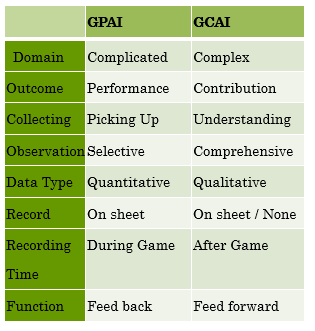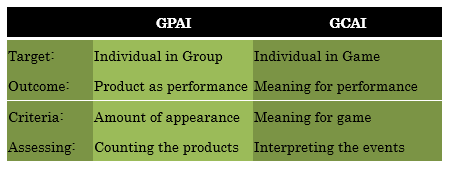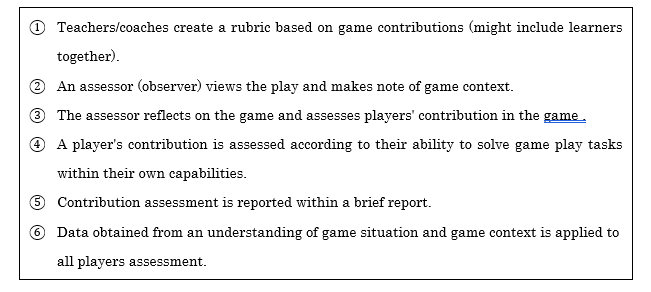Tokyo Gakugei University
GPAI - The developing international trend for teaching ballgames is via game-centered and/or player-centered approaches such as Teaching Games for Understandings, Play Practice, Game Sense, and the Tactical Games Model. In these approaches, assessment of performance within the context of the game is advocated. Arguably the most recognized assessment tool used to assess game performance is the Game Performance Assessment Instrument (GPAI). The GPAI (Oslin, Mitchell, and Griffin, 1998) focuses on the individual's actions in modified games, but I suggest it does not adequately assess the individual's contribution to the team. The GPAI is comprised of seven elements: 1) decision making, 2) skill execution, 3) adjust, 4) cover,5) support, 6) guard/mark, and 7) base. Any number or combination of elements can be assessed to provide a measure of game performance. However, it is often difficult for assessors to complete accurate contextual performance assessments due to observation and recording challenges. Thus, the GCAI was developed.
GCAI - Developed in Japan, the GCAI (Suzuki et.al, 2010) focuses on the nature of participation according to the specific situation and the context within which it occurs. Thus, both teachers and students are engaged in the assessment process where measures of overall game participation (and its meaning) are interpreted according to the individual's ability within game contexts and game situations. Performance is also viewed holistically without emphasis on decontextualized learning segments.
MacPhail,A., Kirk,D., Griffin,L. (2008). Throwing and Catching as Relational Skills in Game Play: Situated Learning in a Modified Game Unit. Journal of Teaching in Physical Education, 27, 100-115.
Oslin, J.L., Mitchell, S.A., & Griffin, L.L. (1998). The game performance assessment instrument (GPAI): Development and preliminary validation. Journal of Teaching in Physical Education, 17, 231–243.
Suzuki,N., Matsumoto,D., Tsuchida,R., Suzuki,O., Hirose,K., Sakuma,N., Isano,R., (2010).New Instrument for Assessing Performance in Game Observation Settings -Game Contribution Assessment Instrument (GCAI)-, Poster Presentation, AAHPERD National Convention 2010 (Indianapolis: March 28, 2010)





